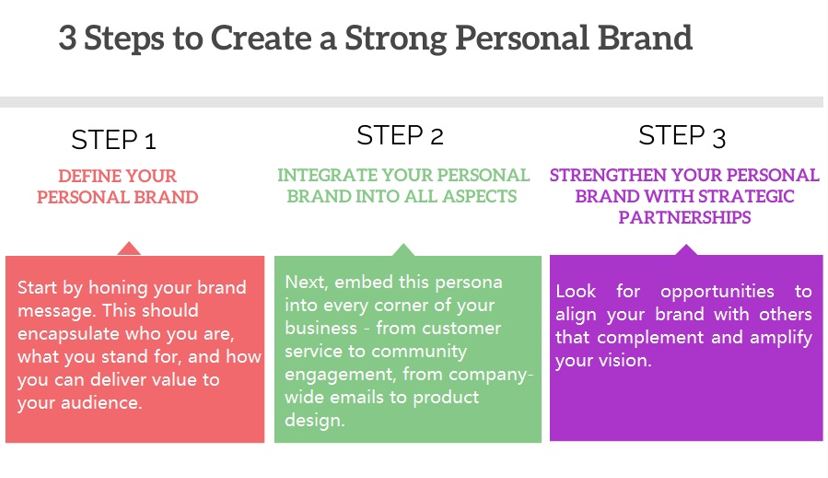Crunching data might be as exciting as watching paint dry for some. Yet, in the realm of brand building, it’s akin to panning for gold in a river brimming with potential fortunes.
Not unlike a grizzled prospector seeking out those glimmers amongst the common gravel, savvy brand builders are turning to data-driven strategies. They’re moving beyond the monolith of social media to explore uncharted territories for branding opportunities. In their arsenal? A whole lot of data and some pioneering strategies that you can exploit too.
Trillions of brand interactions occur daily, beyond the echo chambers of your Facebook and Instagram. This treasure trove of untapped potential could be your California Gold Rush, opening up opportunities undreamed of in your brand-building journey.
Forget generic branding strategies. Welcome to a frontier of unexploited opportunities, powered by data and driven by determination. Buckle up – it’s going to be a wild ride.
1. Harness the Power of Offline Brand Promotion
TL;DR:
- Offline brand promotion is a paramount counterpart to digital strategies.
- Discover the practical steps to implementing effective offline brand promotion strategies.
Far too often businesses get captivated by the reach of digital marketing and overlook the potential value that offline brand promotions still hold in today’s world.
Why Offline Brand Promotion is Still Relevant
A recent estimate has shown that 90% of consumer purchases still happen offline, not online. Even in our increasingly digital age, customers appreciate tangible interactions with brands. From attending a conference to seeing a billboard or reading a flyer, physical touchpoints can leave a lasting impression and enhance the overall perception of your brand.
Offline brand promotion allows you to reach an audience not on social media or those who prefer personal contact with the brands they purchase from. It can be beneficial to small businesses looking to connect with local customers or large businesses wanting to reinforce their brand image at events or through media channels.
- The Tangible Trust Factor
In an era where scamming and online fraud have become a significant concern, offline brand promotion brings about a tangible trust factor. This tactile experience, the sense of realness, can evoke emotions and forge stronger bonds between the brand and the customer.
- Effective Offline Brand Promotion Strategies
For a successful offline brand promotion, it is essential to use data before deciding which strategies best suit your brand.
- Understand Your Target Market
First, you need to understand your target market. Analyzing your customer base can reveal data about their hobbies, interests, which newspapers they read, or the events they attend. This knowledge helps pinpoint where your promotional efforts would be most efficient.
- Develop a Promotional Mix
Once you understand where to reach your clientele, mold a mix of promotional strategies. This could include radio broadcasts, print advertisements in relevant magazines, or sponsorship of local events.
- Consistency is Key
Keep your brand message and aesthetics consistent across all channels. This ensures your business is easily recognizable whether the customer is seeing your social media post or encountering your booth at a trade fair.
By offsetting the digital onslaught of promotion with thoughtful offline strategies, businesses can nurture a balanced image and reach. Guard against viewing social media as a panacea for your promotional needs; instead, see it as a part of a diversified promotional strategy where offline promotion plays a crucial part. This integrative approach, backed by data, will give your brand a stronger, broader appeal.
2. Leverage Personal Branding Beyond Social Media
- Crucial to diversify your brand beyond social media platforms
- Build a robust reputation that isn’t dependent on the whims of algorithms
- Nurture strong personal leadership that will be your brand’s rock during social media storms
The Importance of Personal Branding Beyond Social Media
Forging a strong personal brand isn’t just about viral tweets, captivating Instagram stories or quirky TikToks. It’s about crafting an authentic reputation that resonates across all facets of your business ecosystem, even beyond digital boundaries. This equips you with a powerful credibility shield, helping you to build trust and affinity with prospects, customers, and partners. It can open doors to new opportunities, fostering meaningful business connections that create tangible results.
To think that personal branding only carries value within the scope of social media is to undermine its vast potential. Personal branding penetrates into offline interactions, customer service, corporate culture, hiring practices, and even product quality. For businesses looking to forge strong, credible connections with their audience, personal branding ought to permeate each corner of their operations.
When you establish a robust personal brand beyond the ebb and flow of social media trends, you gain a competitive edge. The realm of social media can be unpredictable, subject to algorithm changes, fleeting trends, and the unpredictable whims of public opinion. However, a consistent personal brand that exists beyond social media provides both a buffer against these uncertainties and a core essence that remains constant, resonating with your target audience.
How to Build a Strong Personal Brand Beyond Social Media
The process of cultivating a robust personal brand requires a commitment to authenticity, consistency, and clarity. It revolves around identifying your unique selling proposition (USP) – the inherent qualities that set you apart in your industry.

3. Implement Non-Social Media Marketing Tactics
- This section centers around the essential role of non-social media marketing in brand building and offers a valuable guide to effective implementation.
- By exploring this, you discover why diversification in marketing efforts is not only beneficial but crucial for your brand’s longevity.
- You will walk away with a clear step-by-step guide on how to apply non-social media marketing tactics.
Why Non-Social Media Marketing Tactics are Crucial
Ignoring non-social media marketing tactics is a common mistake in the rapidly digitalizing world, but these choices can play a powerful hand in your brand building strategy.
While social media has its undeniable benefits, it’s crucial not to overlook the value of non-social media marketing efforts. The key motive behind this lies in DIVERSIFICATION. Concentrating all efforts solely on social media puts you at risk. Be it a sudden change in algorithms, the rise of ad-blockers, or platform-specific crises, diversifying your marketing tactics equates to better resilience against these changes.
Moreover, you reach a broader audience with non-social media channels. Not every potential customer is on Instagram or LinkedIn. Some prefer e-mails, magazines, or trade show events. By using a combination of tactics, you can reach and influence a wider range. Remember, marketing is never one-size-fits-all. Catering to this variety of preferences is pivotal in brand building.
Last but not least, non-social media marketing ventures often result in more meaningful customer engagement. Ever received a personalized business letter or attended an immersive experiential marketing event? They can easily outshine the most creative social media campaign in terms of forging deeper connections with customers.
Effective Non-Social Media Marketing Tactics
Building a strong brand demands that you go beyond the social media realm. How exactly do you do that? Here’s a stepwise guide.
First, CONTENT MARKETING is your magical weapon. Blogs, infographics, case studies, or newsletters allow you to establish your brand as a knowledgeable leader in your industry. Authentic and helpful content fosters trust, translates complex concepts into digestible formats, and plays a key SEO role.
Second, don’t underestimate the power of SEARCH ENGINE OPTIMIZATION. Ranking higher on Google organically helps improve your brand’s visibility significantly. Ensure that your keywords are top-notch, meta description compelling, and website optimized for mobile users.
Next, step into DIRECT MARKETING. Mailouts, telemarketing, and event marketing are excellent ways to target specific demographics directly and measure your marketing responses effectively.
Finally, PUBLIC RELATIONS can be leveraged for your brand. Creating a well-curated press release or holding a press conference can broadcast your message to a wide audience. It’s about getting the right message to the right people at the right time.
By intertwining these tactics, you can create a holistic marketing strategy that won’t just bank on social media algorithms. It’s about expanding your brand’s horizons and reaching your consumers in more ways than one.
4. Focus on Building Brand Awareness
TL;DR:
- Understand the role of brand awareness in building a strong brand.
- Step-by-step guide to building brand awareness beyond social media.
Even though we’ve been discussing the importance of implementing non-social media tactics, one aspect that shouldn’t escape attention is brand awareness. This concept is the foundation upon which all successful brand-building strategies are erected.
The Role of Brand Awareness in Brand Building
- The Significance of Brand Awareness
As a foundation, brand awareness holds an essential position in the brand-building process. It’s the entry point into the consumers’ minds–a lens through which your audience perceives, recognizes, and remembers your business amidst thousands of brands. Without an established brand awareness, businesses fail to build connections, evoke emotions, and most importantly, achieve customer loyalty.
- Brand Awareness and Customer Perception
Brand awareness doesn’t stop at making your brand known; it’s about making it loved. The impressions that businesses create in the minds of potential customers significantly influence their perception of the brand. A high level of brand awareness means that customers easily recall your brand, and they’re likely to consider it when making purchase decisions.
How to Build Brand Awareness Beyond Social Media
We understand the power of social media in creating brand awareness, but relying solely on it can be limiting. Expanding your brand awareness approach beyond social media opens new avenues of audience engagement and increases your brand’s visibility significantly.
- Leveraging Content Marketing
Content marketing is a valuable tool for disseminating valuable and relevant content that resonates with your audience. Strategies such as blogging, podcasts, white papers, eBooks, and webinars provide rich and diverse platforms for showcasing the value your brand offers. With quality content, you can attract and engage your audience, effectively sparking conversations about your brand.
- Enhancing SEO
Investing in SEO strategies can enhance your brand visibility exponentially. With the right keywords, meta descriptions, and well-optimized website design, you can improve your website’s visibility in search engine results, steering more organic traffic towards your brand.
- Implementing Email Marketing
Don’t underestimate the power of the humble email. A well-crafted email marketing strategy can help you reach potential customers directly, offering personalized content that meets their individual needs and preferences.
There’s more to brand-building than simply existing on social media. By focusing on brand awareness and expanding your strategies beyond social media, you’re setting your business up for robust and enduring growth. Remember, brand awareness isn’t an overnight achievement; it requires persistence, consistency, and innovation. But with a concerted effort, the rewards can be more than worth it.
Understanding the Concept of Brand Building
Brand building is the process through which businesses engender value by creating a strong brand image. This comprehensive process entails the creation of a unique identity, positioning in the market, and consistent brand expression. The value derived from brand building stands as a testament to the company’s commitment to delivering quality products or services, and it earns the trust and loyalty of customers over time. Gaining such a substantial reputation influences consumer behaviors positively, leading to an increase in the company’s market share and profitability.
The Role of Social Media in Brand Building
We cannot deny that social media has a crucial role in brand building in the current digital era. Numerous brands utilize it to quickly connect with masses and foster brand recognition. Using social media for brand building is powerful; however, over-reliance on it could result in a tunnel vision, neglecting other innovative and equally impactful ways. Hence, exploring other avenues for brand building can open up opportunities for exceptional growth, increased reach, and enduring customer engagement.
Case Studies of Successful Brand Building Beyond Social Media
Interestingly, some businesses have managed to build a robust brand presence without banking solely on social media.
-
Unilever’s Dove – Real Beauty Campaign
source url: https://www.livemint.com
The Dove’s “Real Beauty” campaign is one such example, where Dove reinforced its commitment to creating a more inclusive image of beauty. The campaign used billboard advertisements, TV commercials, and interactive website content to reach an audience beyond its social media followers.
-
Red Bull – Content Marketing
source url: https://www.epicnewmedia.co.uk
Lauded as the ‘King of Content Marketing’, Red Bull extended its brand reach by establishing a multi-platform media company, driving consumer engagement through adrenaline-pumping sports events and unique video content.
These case studies underline the importance of exploring diverse strategies for brand building beyond social media platforms.
Common Challenges in Brand Building Beyond Social Media and How to Overcome Them
Devising brand building strategies beyond social media does come with its set of challenges. Companies can find it hard to measure brand impact directly, and establishing brand consistency across different platforms may pose difficulties. But, by focusing on long-term goals, investing in quality content creation and design, and conducting regular brand audits, these challenges can be overcome. A strong brand built on solid foundations can pave the way for sustainable growth in the long run.
Future Trends in Brand Building Beyond Social Media
Given the ever-evolving nature of the business landscape, it’s vital to anticipate upcoming trends in brand building. Near future may see a surge in voice marketing strategies, thanks to the increasing penetration of voice-activated devices. Furthermore, leveraging immersive technologies like AR and VR for interactive brand experiences or investing in niche networks for more focused, personalized outreach are potential strategies to tap into. It is compelling to see how brands will exploit these opportunities to reach their audience beyond social media.
Conclusion: Empowering Your Brand Beyond Hashtags
Hard data confirms it: online visibility needs more than tweets and likes; it thrives on audience understanding, quality over quantity, content marketing, and SEO strategies.
Here’s what you’re packing in your toolkit now:
- Deeper knowledge of your audience shines a beacon on the path towards engagement.
- Prioritizing quality interactions boost brand authenticity and fosters loyalty.
- Fine-tuned content marketing attracts the right eyes, not just more.
- SEO isn’t outdated, it’s a network, inviting new guests to your house– your brand.
This toolkit isn’t just for added heft or to collect dust; it’s your comprehensive blueprint for moving mountains in the digital world. The next step? Start shifting the boulders – get to know your audience and optimize that communication, re-orient your focus towards quality relations, weave your brand story into consumable content and let SEO be the thread guiding potential clients right to your doorstep.
As you get your hands dirty building your brand, consider this: what single quality makes your brand singly indispensable in the eyes of your stalwart supporters?
Remember, your brand isn’t built in the echo chamber of social media alone— it’s constructed brick by brick with the mortar of knowledge, quality, content, and optimization.









